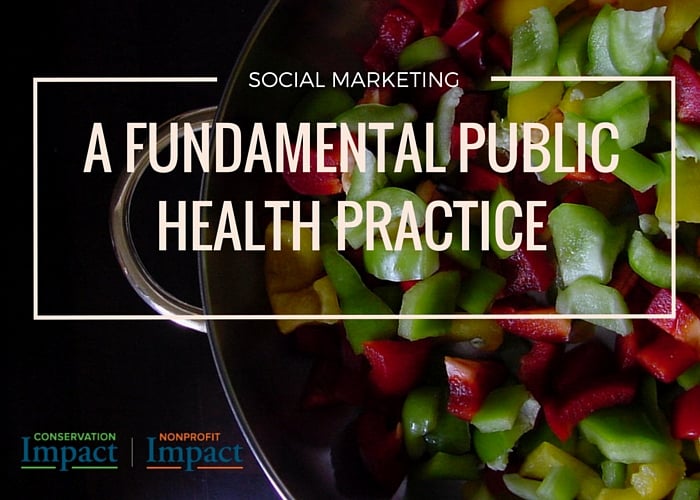
Social Marketing: A Fundamental Public Health Practice
I am teaching a class at the Colorado School of Public Health on nonprofit organizations and public health. The class focuses on the role of nonprofits in public health and explores how to manage a nonprofit for success and sustainability. I spent a class session on the topic of marketing and the class discussion reminded me of the frequent misunderstandings I encounter regarding marketing in my work with public health clients.
This is an important topic for public health, so I plan to cover it over a series of three posts. In this post I will explore what marketing is in general and what social marketing is in particular. I will share some of my “golden rules” for marketing in part two. And in part three, I will review the steps of the marketing process and share a helpful template.
Overview
In the private sector, marketing is defined as understanding and satisfying the needs and wants of the customer. The better a business understands the interests and behaviors of its customers and engages customers in meaningful, two-way communication, they better the business will satisfy customer needs, increase transactions, and be successful.
In the public and nonprofit sector, social marketing is the more appropriate discipline. Social marketing adapts the principles and practices of marketing to solve societal problems or address issues to benefit a community. Social marketing is particularly relevant to public health, evidenced by fact that the social marketing literature is replete with public health examples!
Everything is Social Marketing
I could very easily argue that everything that public health does is a social marketing exercise! The health promotion and education functions of public health involve getting individuals, communities, and systems to engage in healthy behaviors or practices. We see examples of social marketing problems everywhere in public health:
- How do we increase the number of children on state children health insurance plans?
- How do we decrease sexually risky behaviors?
- How do we increase cancer screening rates with priority populations?
An Example from Louisiana
A project we are working on in Louisiana to increase the number of mothers who breastfeed provides a good example of a social marketing problem. A traditional health promotion and education approach might assume that moms-to-be need to be made aware of and educated on the benefits of breastfeeding. The resulting solution might be placing educational brochures in hospitals, using visiting nurses to do one-on-one education, or to hosting community baby showers to raise awareness.
In contrast, applying a social marketing lens to the problem means that we want to understand and remove the obstacles to and enhance the opportunities for engaging in a desired behavior (in this case, breastfeeding). Using the first principle of marketing – understand your audience – we talked with moms, family members, and healthcare practitioners. We also observed behaviors and practices in WIC clinics and waiting rooms.
The market research showed that the obstacles that keep women from breastfeeding run much deeper than a lack of awareness or education (in fact, most of the moms are already quite conversant in the benefits of breastfeeding!). The real obstacles that keep women from engaging in breastfeeding included:
- The people who most influence the women (their doctors, grandmothers, and mothers) are often very (and vocally) opposed to breastfeeding
- Some women reported that their healthcare provider wouldn’t discharge them from the hospital until their baby had eaten a certain amount of formula (whether they were breastfeeding or not)
- Coworkers who resented women getting “extra” breaks to pump (even when the supervisor was supportive)
Conclusion
This example shows how taking a social marketing approach can uncover what’s really going on and lead to the development of better strategies – strategies that address the real, albeit challenging, obstacles that stand in the way of these moms breastfeeding – rather than relying solely on less effective educational approaches.
Understanding and incorporating the principles and practices of marketing is not only conceptually interesting, but professionally imperative. Marketing and social marketing have their own evidence base and proven practices that can benefit public health. In the next two blog postings, I will share some rules that can guide your marketing efforts and outline the steps in the marketing process.

